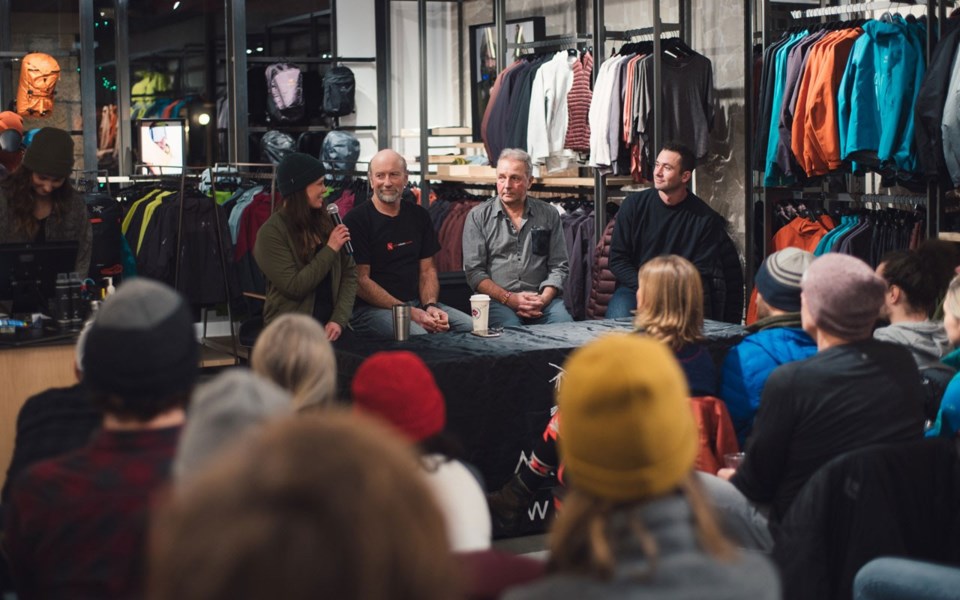It was standing room only for a recent talk on this year's challenging snowpack, which saw experts call for caution currently while travelling the backcountry.
The panel of heavy hitters—which included Wayne Flann (a part-time ski patroller and popular avalanche blogger), Mitchell Sulkers (an avalanche safety instructor who gets into the backcountry about 150 days a year), Abby Cooper (a remote backcountry photographer), and Ross Berg (founder and director of Altus Mountain Guides)—took a series of questions from moderator Natalie Austin and even stuck around for a few from the crowd.
At the heart of the Jan. 23 discussion—part of the Winterstoke Backcountry Festival organized by Altus Mountain Guides—was the deep, faceted layer that formed at the start of the season and was compounded by a cold spell with relatively little snowfall.
(Faceted snow refers to snow grains that have transformed into larger angular grains. These facets have weak bonds with neighbouring snow grains and are often referred to as sugary snow.)
While some may think that this year's setup is unusual for the Coast Mountains, Sulkers said that there is plenty of precedent for it.
"It's not a unique event in the history of the snowpack in this area, but it's not something that we see every couple of years," he explained.
Facets, he explained, form quickly when there is a shallow snowpack and cold temperature. It's important to recognize that they take "an incredibly long time to heal," he said.
Flann then listed several years when faceted layers formed early in the season, only to cause significant avalanche danger later in the season.
"Personally, I think that in the last 15 years, you can't really call it a coastal snowpack anymore," said Flann. "Because we have these layers, and we get facets and we've got depth hoar, and we get big avalanches."
Another key theme from the talk was safety, with the panellists encouraging the audience to take a cautious approach in the backcountry.
Berg noted that the mountaineering culture in the Coast Mountains has traditionally been characterized by a more "easy-going attitude" compared to those travelling in the Interior or Rockies, areas which have traditionally seen greater avalanche activity.
"Maybe we, as a community, need to put more effort into preparing ourselves around what's going on," he said.
People in the Coast Mountains "sort of have this culture of saying, 'Oh it's the Coast,'" said Berg, adding that that's "not a snowpack evaluation.
"I think that there's a bit of a cultural shift where we need to treat the Coast Mountains like we would as if we were going to be in the Interior or Rockies, because the snowpack is not what it used to be."
Cooper added that the nature of backcountry travel can build confidence quickly, and that it's important for people to not become overconfident.
"People get comfortable really quick," said Cooper.
It's therefore critical to check in, to make sure that you are not getting yourself into situations you aren't ready for by asking important questions.
"[Ask] why are you doing this? Do you have the foundation to do this? Are you relying on other people?" said Cooper encouraging backcountry enthusiasts to think and plan before heading out.




